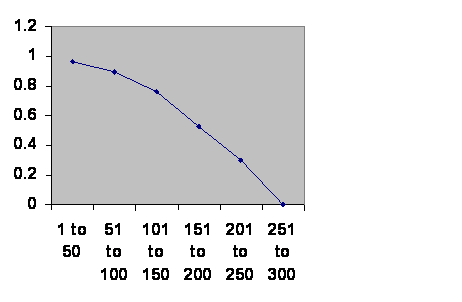
June 24, 2011
open letter to be posted on nobabies.net
Leonard Susskind
Room 332
Varian Physics Building
382 Via Pueblo Mall
Stanford, CA 94305-4060
650 723 2686
fax 650 723 9389
susskind@stanford.edu
Dear Dr. Susskind:
I enjoyed the article about you (Bad boy of Physics Peter Byrne SCIENTIFIC AMERICAN vol. 305 no. 1 July 2011 page 80). I may have something helpful for you. First I must confess that more than 30 years ago when I first heard of black holes I was fascinated. The implication of the mathematics of their structure seemed to indicate a very clean simplifying principle in physics. It solved a number of problems. It was so obvious to me that I was sure that was where the book was leading. It was not, nor has the idea ever been discussed over the decades. As you say, our minds are poorly set up for abstractions. Under more favorable conditions I would beg you to consider it, but more important considerations intervene.
You propose that there may be things that are real that our brains simply are not equipped to think. Maybe an example would be helpful. This is totally outside your own specific interest, but it is so easy a child could understand it. It is nothing like as difficult as cat’s cradle or the demonstration that 2 has no rational square root.
Malthus was a preacher who noticed that he was doing a lot more baptisms than funerals and decided that the world would outgrow its food supply. But he was in a rural church. Had he been a better preacher he would have been given an assignment in the city and would have reached the opposite conclusion; he would have been doing almost all funerals and no baptisms. He would also never have been famous. The fact that he was wrong can be verified informally by a walk to the park. There are pigeons and they are all fat. There are only so many people feeding them, so the food supply is limited. They should be starving. There is no balance of nature here, no predators or diseases. The population simply stops growing.
More formally, consider evolution. The specialized form is always favored. Robins and moles may both be able to catch earthworms, but an intermediate form would not survive. It would be outcompeted by real moles and real robins. So when a new niche appears in the environment, there is a race to be the first to exploit it. That species that can undergo speciation first will always have a head start. It can separate into robins and a new species that will evolve into moles, so to speak before a slower speciating form.
So consider a valley with rabbits. One rabbit has two offspring, each with a copy of the same chromosome from the parent. Of the two, one remains local while the other hops across the valley. Suddenly it gets cold. A glacier splits the valley, and remains for 2,000 rabbit generations. When it thaws, one rabbit from generation 2,000 hops back across the valley and mates with its cousin also of generation 2,000. But by this time speciation has occurred. The two chromosomes are so different they cannot do business together. Now you can challenge me and insist it is 3,000 generations and I will not mind. If you insist it takes 10,000 generations, I will have to go into specific examples. Let’s stick with 2,000 for now.
All right, rewind. It is the same set up but there is no glacier. There are 1,000 rabbits in the valley, a number we will assume to remain constant for a long time. The rabbits mate at random. Since each rabbit has 2 copies of each chromosome, those same two chromosomes have a one in 2,000 chance of getting together each generation. So on average it takes 2,000 generations for that to happen. But the chromosomes cannot do business. They are too different. Since this is true of every chromosome in the valley, the whole valley full dies. And since 2,000 generations is a very long time, the rabbits will have been getting carried by accident to other valleys. The whole species dies, and if the rabbit is a keystone species the whole ecosystem falls.
Obviously there is a problem with one of our assumptions. The only viable candidate is the random mating pattern. It simply cannot be going on for extended periods. Evolution must have worked out a way to keep mating pool sizes smaller than 1,000.
See? No hard words in that. Nothing elaborate. Simple as can be. But it is almost impossible for most people to follow the logic. And remembering it is impossible for all but a tiny handful. So there is your example of the abstraction that our minds cannot handle.
But I am sure you are thinking, “Why should evolution not give us brains that can fathom something so simple?” Well evolution has a very good reason.
The reason is that the population that is excessive is such a threat. It needs to be eliminated. It has to go. It isn’t a matter of exceeding environmental limits. It’s a matter of snuffing out the population before speciation effects become significant, long before.
There is ample evidence that nature does just that. Here are some references:
R. Sibly et al., Science 309 607 (2005).
A. Helgason et al., Science 319 813 (2008).
R. Labouriau, A. Amorim Genetics 178 601 (2008).
R. Labouriau, A. Amorim Science 322 1634 (2008).

On the Regulation of Populations of Mammals, Birds, Fish, and Insects, Richard M. Sibly et al. SCIENCE vol. 309 no. 5734 July 22, 2005
page 607 – 610 The vertical axis is the growth rate. The horizontal axis is the estimated population size. They did not find inbreeding depression but we know it is real. This is an example of one of over 1,000 serial field counts of animals. The less kin, the less fertile, although the mechanism seems to saturate eventually. Notice that by the time the population has risen to 1,000, fertility has fallen below replacement. The other three articles show the same effect in humans. The best numbers are the Iceland study by Helgason, which also shows birth falling below survivable before a population of 1,000 is reached.
Here is historical data from Mesopotamia, its entire history until the 20th century (whereupon global effects dominate local effects).

Information taken from R. H. Carling THE WORLD HISTORY CHART International Timeline Inc. Vienna, VA 1985. The experience of Southern Mesopotamia. The vertical axis is The chance of an empire of any age continuing to rule locally for another 50 years. The horizontal axis is the ages of the empires. I broke the Ottoman Empire into two, because their Janissary elite came from two different sources during the early and late empire.
If empires and societies were falling because of external effects such as climate change, overwhelming wars or overwhelming diseases, the line would be horizontal. If they fell by internal effects such as a clever population, the right politics or the right religion, the line would go up because of selection. The line goes down, indicating that the cause is neither internal nor external, so it must be a consequence of the very fact of having a large population.
So whole cultures vanish. They must be dying out. Nature is quite strict in this regard.
There is more evidence, but you see the principle.
So now let us pretend evolution has purpose. It’s just a rhetorical gambit. Evolution is killing off the population before it can do harm to other populations. We can see it is doing this because of fertility effects. But there are other choices.
So there is the example. Maybe you will find it interesting. Do let me know what you think. I am in sore need of people who can handle abstractions.
Sometimes I wonder if the cosmological notion I mentioned at first is too hard to fathom or whether it is also under some sort of ban. It seems unlikely, but maybe.
Sincerely,
M. Linton Herbert MD
There have been 17,121 visitors so far.